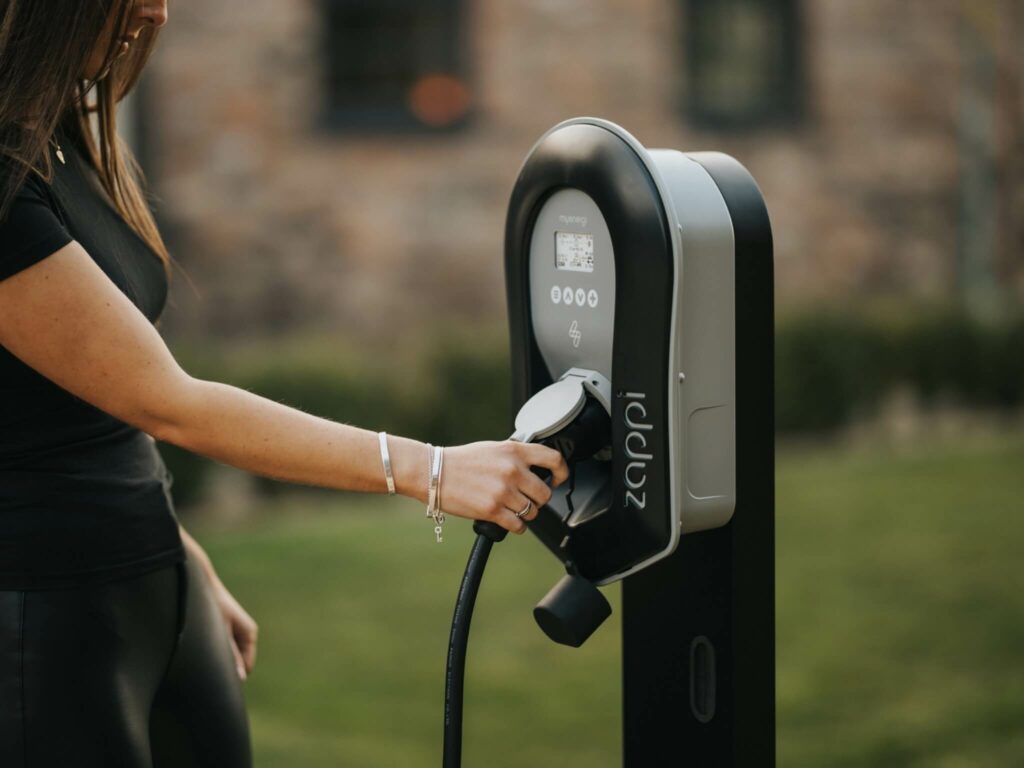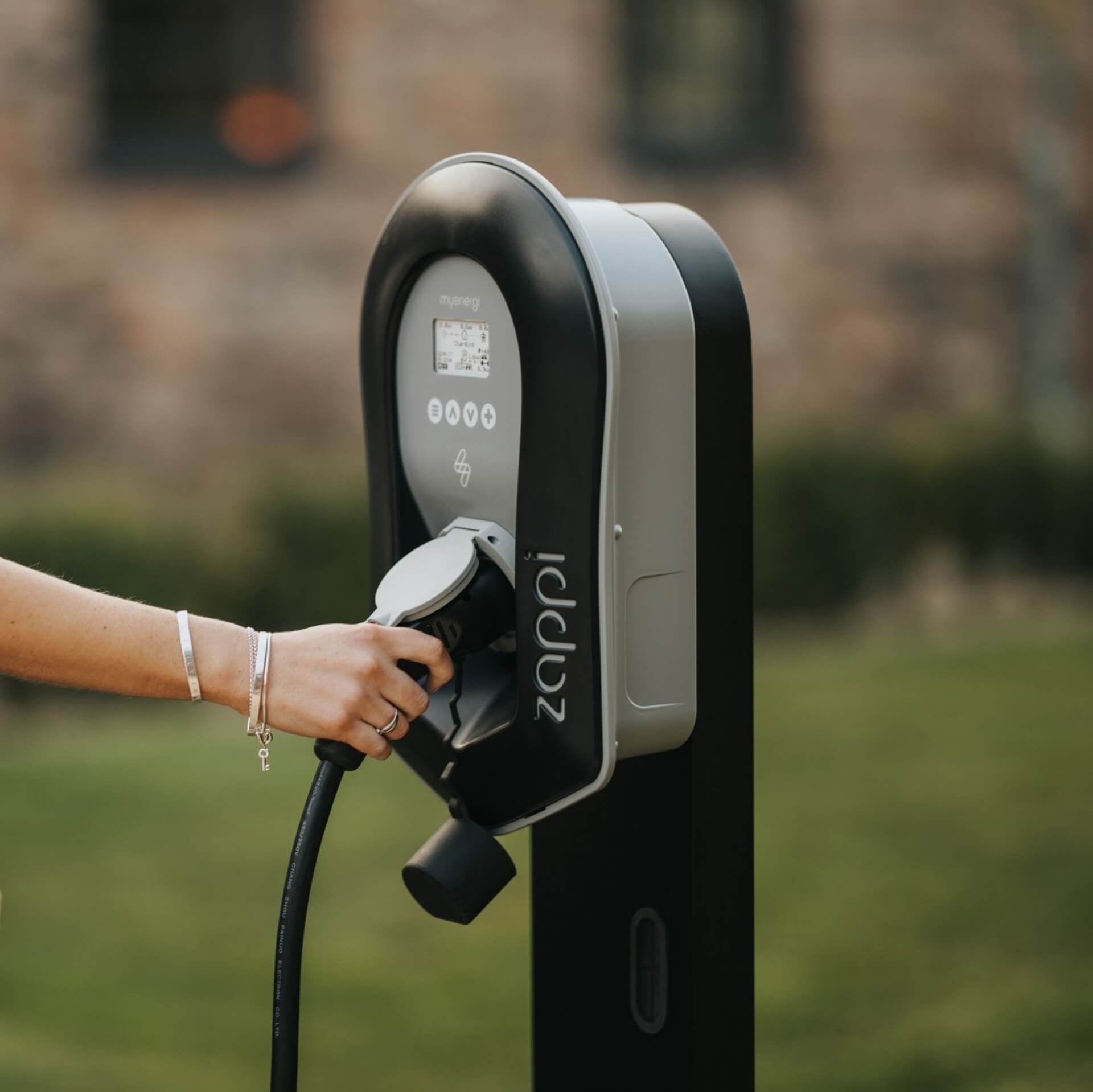Do electric cars have gears?
Electric cars don’t require a clutch unlike conventional petrol or diesel engine vehicles. These combustion engine vehicles require a multi speed gearbox which dictates the level of power to the engine. Electric vehicles however only have the one gear. You could class them as automatic vehicle, as you technically do not need to change gear and therefore will only find two pedals in your footwell. A conventional petrol or diesel engine vehicle requires gears as it can only rev to around 4000-6000 rpm before requiring a gear shift, this ensures there is no undue pressure applied to the engine. An electric motor however, can revs of up to 20,000 rpm and therefore does not require the change in gear.

What are gears used for?
A gearbox in a conventional petrol or diesel engine vehicle allows for the car to be driven with minimum strain on the engine. The changes in gears means that the vehicle can benefit from greater fuel economy when travelling at high speeds or over long distances. Changing gears allows the driver to determine the amount of power which is available in the engine. First gear, for example, has a lot of pulling power and will essentially get the vehicle going. Gears 2 and 3 also have quite a high level of pulling power which are useful when trying to gain speed. Whereas gears 4, 5 and 6 have much less pulling power but are convenient for lowering your vehicle rpm and the making the vehicle fuel efficient whilst putting less strain on the engine.

Will electric cars have gears in the future?
Electric vehicles do not need gears to move while a standard petrol or diesel combustion engine requires multiple gears for the power output to ensure the vehicle produces a consistent amount of torque without putting too much pressure on the engine. The mechanics behind running an electric vehicle are not quite so complex.
As they are fuelled by the battery power they do not need the gears to dictate how much power goes to the engine and therefore only the one gear is required. It is therefore highly unlikely that future models of electric cars will come equipped with gear changes unless a car manufacturer decides to add them in for a drivers familiarity. But they would have no benefits of a drive experience or the running of the vehicle.
Do I need a manual licence to drive an EV?
As electric vehicles don’t technically have any gears at all you do only require an automatic licence to be able to drive one. That does mean, if you pass your test in an EV, you will be able to drive automatic cars in future. So you would either have to continue driving an EV or switch to getting a manual licence to top up your automatic licence if you were wanting to drive a standard petrol or diesel combustion engine manual vehicle in the future as well. There may come a time in the future where all drivers are using EV’s and therefore driving lessons will be in EV’s and your driving licence will also be for automatic vehicles only. But as this will be the only car available in the future this won’t be an issue.
Are electric cars easy to drive?
Electric cars and very easy to drive, because you do not have to learn to negotiate gear changes. If you are a beginner, learning to drive and are only going to be driving EV’s in the future you may want to opt for just doing an automatic driving licence to make the whole driving experience easier for you. In the footwell of an electric car you will only notice two pedals; the left one being the brake and the right one being the throttle or accelerator.
This means there is no clutch which is found in a standard manual combustion engine vehicle. This does make an electric vehicle easier to drive as you simply press your foot on the right throttle pedal to move and left brake pedal to slow down and stop. Of course there is a lot more to learning to drive than just the two pedals but if you are only looking to only drive EV’s then can you certainly have it that little bit easier than those who are having to learn to use gears on a manual vehicle too.
More about EVs and FAQs
The average distance an EV can travel is 211 miles. However, this is dependent on numerous factors including the size of the battery in kWh, the vehicles weight & design and ever-fluctuating factors such as the weather.
If you have never run out of petrol when driving, it is unlikely you will run out of battery. The concept of recharging is the same as refilling your vehicle. We’d recommend heading to the nearest charging station when your vehicle reaches between 15-20% capacity. Recharge on a public DC charger will take between 10-30 minutes dependent on your vehicles charging rates.
In the perfect conditions, an electric vehicle (EV) will use on average around 0.25 kWh per mile, though this figure will fluctuate slightly based on changes in rolling resistance, temperature, wind direction and daily weather conditions.
To maintain the longevity of a vehicle battery it is recommended that you maintain a minimum charge of at least 15-20%. The average distance between charge points in the UK is 6.1 miles meaning the bare minimum charge required would be 4%, though this is not recommended.
620 Miles is the official range of the Tesla Roadster and currently in the top spot for the longest range on an electric car. The average between the top 10 longest range vehicles is 342 miles.
211 miles is the average range of an EV, when comparing 40 of the best selling electric vehicles in 2020. Range is determined by many factors including vehicle weight and the kWh size of the battery.
It would cost £7.77 on average to fully charge an electric vehicle at home and most users would fully charge once per week. This is an average of £31.08 per month.


